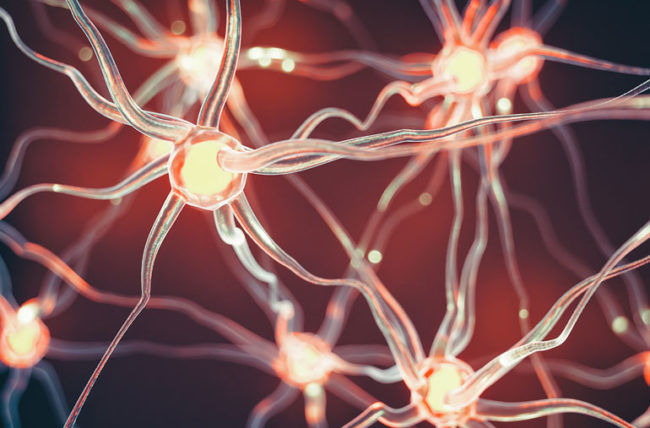4 Exercises to Reduce Chronic Nerve Pain
The central nervous system comprises the spinal cord and the brain. Peripheral nerves run throughout the rest of your body to organs, arms, legs, fingers, and toes.
Damaged nerve fibers transmit incorrect signals to pain centers. Nerve function at the site of nerve damage and in areas of the central nervous system may change (central sensitization).
Neuropathy is a condition or change in one or more nerves. It is not always easy to determine the cause of nerve pain. This type of pain is associated with hundreds of diseases.
Causes of chronic nerve pain
The most common causes of nerve pain fall into four categories: disease, injury, infection, and limb loss.
Diseases
Nerve pain can be a symptom or a side effect of various diseases and conditions. Multiple sclerosis, multiple myeloma, and other cancers are among them.
Although neuropathic pain does not affect everyone with these conditions, it can be a problem for some. According to the studies, diabetes accounts for 30% of neuropathic cases. Diabetes can affect how your nerves function.
Diabetes patients frequently experience loss of feeling and numbness in their limbs and digits, followed by pain, burning, and stinging.
Long-term excessive alcohol consumption can lead to various complications, including chronic nerve pain. Regular alcohol use can cause nerve damage that is both long-lasting and painful.
Trigeminal neuralgia is a painful disorder characterized by severe neuropathic pain on one side of the face. It's one of the more common types of neuropathic pain, and it can happen for no apparent reason.
Lastly, cancer treatment may result in neuropathic pain. Both chemotherapy and radiation can affect the nervous system, resulting in unusual pain signals.
Injuries
Tissue, muscle, or joint injuries are a rare cause of neuropathic pain. Similarly, nerve damage can be caused by back, leg, and hip problems or injuries.
While the injury may heal, the nervous system damage may not. As a result, you may be in pain for many years after the accident.
Accidents or injuries to the spine can also result in neuropathic pain. Herniated discs and spinal cord compression can damage nerve fibers in your spine.
Infection
Infections are rarely the source of neuropathic pain.
Shingles, which are caused by the reactivation of the chicken pox virus, can cause neuropathic pain along a nerve for several weeks. Postherpetic neuralgia is a rare shingles complication characterized by persistent neuropathic pain.
A syphilis infection can also cause unexplained burning and stinging pain. People living with HIV may experience unexplained pain.
Limb loss
A rare form of neuropathic pain known as phantom limb syndrome can occur when an arm or leg is amputated. Despite losing that limb, your brain continues to believe it is receiving pain signals from the missing body part.
What's going on is that the nerves near the amputation are misfiring and sending erroneous signals to your brain.
Phantom pain can be felt in the fingers, toes, penis, ears, and other body parts, in addition to the arms and legs.
- Vitamin B deficiency
- Carpal Tunnel Syndrome
- Thyroid problems
- Facial nerve problems
- Arthritis in the spine
Symptoms of chronic nerve pain
Each person's symptoms of nerve pain may vary slightly, but these symptoms are familiar:
Shooting, burning or stabbing pain
Tingling and numbness or pins and needles feeling
Spontaneous pain, or pain that occurs without a trigger
Evoked pain, or pain that's caused by events that are typically not painful-such as rubbing against something, being in cold temperatures, or brushing your hair
A chronic sensation of feeling unpleasant or abnormal
Difficulty sleeping or resting
Emotional problems result from chronic pain, loss of sleep, and difficulty expressing your feelings.
Four exercises to reduce chronic nerve pain
Take a Walk
Aim for 30 minutes of walking daily, five days a week, with a 20-minute warm-up. If walking is difficult at this time, begin by walking to the mailbox or around the house. Feel free to bring a friend and make it a social event. A walk is only the beginning.
Aerobic Exercises with a Low Impact
If kickboxing isn't your thing, spend the afternoon swimming or cycling. Both are low-impact on muscles, bones, and joints. The best part is that swimming and cycling improve blood circulation.
Resistance Exercise
We aren't all bodybuilders, and that's fine. Adding resistance training to your daily routine, whether lifting five-pound weights or doing sit-ups or pushups, can increase flexibility and blood flow.
Stretching promotes flexibility
Stretch your arms, neck, legs, and feet for a few minutes every day. It does not have to be long or complicated. While sitting or lying down, you can move your neck side to side, up and down, and your legs in a bicycle motion.
Make it a personal goal to participate in at least one of these activities. Any movement is preferable to none. Remember that your body needs to heal, and staying active allows blood to circulate and healing begins.
Take a cue from the tortoise and the hare: it's not how fast you go, but your determination to stay the course will get you to the finish line.
Always consult your doctor before beginning a new workout routine.






Comments
Post a Comment